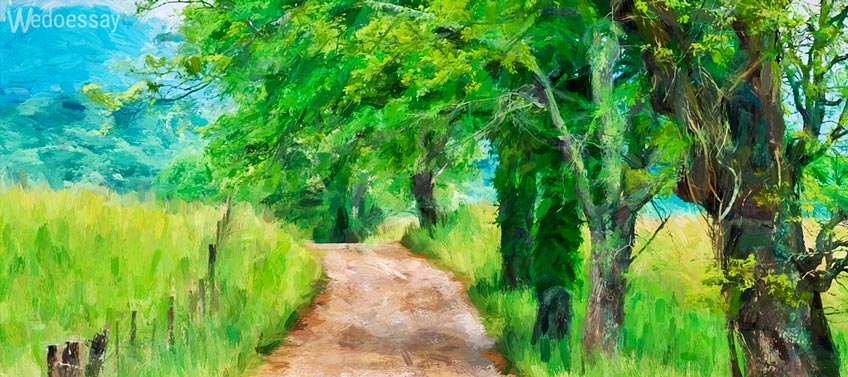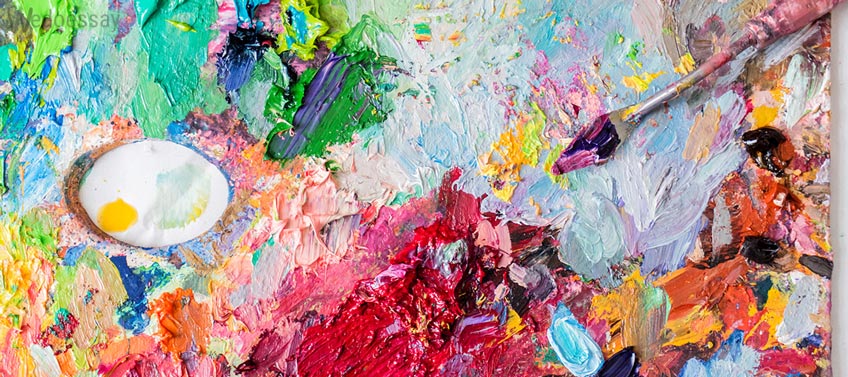
Being aware of art styles, epochs and figures with their individual features defines a well-brought and a well-educated person. Understanding the ideas and concepts of past and modern times makes us closer to the understanding of people and their nature. If you are interested in self-development, in arts and culture, you will find this article to be a good piece of information. Even if you are not really fond of art, this may be because you know nothing about it. Just discover some facts about impressionism to distinguish it from other styles easily. Will this make you more enthusiastic about learning more? We will see. At least you will be able to create an original essay about impressionism based on the following informational background.
Impressionism: Overview of Things to Know
It is impossible to start writing about Claud Monet without making a short introduction to impressionism: the style he has been working within. What do you know about it? Does it deal with those clumsy paintings with rough lines which should better be viewed from a distance? What makes those pictures worldwide known?
-
1. Plots and Compositions of Paintings

The plots taken as a basis by impressionists are usually the ones from nature. They did not really care about the picture being full, so you may notice just a part of a building, some part of a tree cut off etc. Impressionism believed in impressions (eventually), so they created their painting the way they saw then in the real life. That is why plain air painting (painting on the open air) was so popular at that time.
Impressionists were excited about the world as a huge mechanism in a constant motion. The most popular views to depict were marina ones and nature under the sunshine. Another theme loved was painting of a view of a big city, with its rush and a harmony at the same time.
A huge attention was paid to series of paintings of the same object from various perspectives. Each such work discloses a certain aspect of the depicted object, and the series shows the full image. The eye of an artist in such series is like a moving camera.
What else can be mentioned on this point is a variable perspective. Impressionistic artists the point of view on an art-piece may be different and unpredictable.
-
2. Connections to Other Spheres
The introducing of impressionism was caused by the change in understanding the world, by the development of the positivistic studies, by the willingness of literature to become a research on the social life and individual psychology. Impressionism appeared in painting and poetry simultaneously and later had its influence on sculpture, music, theater, and even the art criticism.
-
3. Colors

Impressionists never used black or white paints. Indeed! They mixed variety of paints to create a vivid picture of how they saw the world. The most favorite colors were orange (a color of the sunshine) and blue (color of the water and the sky). The Japanese culture’s influence is clearly seen here: taking the Eastern pieces of art as examples, impressionists got the courage to depict a brightly red roof, deep blue water, white wall. They were showing colors through the prism and influence of the sunshine. That is why one can mostly see warm shades on impressionistic paintings. Impressionists could not depict colors of the objects, which do not actually have a clear color: the color of water, air, clouds, which are visible as a result of a sunshine. Color is more than color here: it expresses emotions and feelings creating a general tone of a painting. What is interesting, you will rarely be able to understand a copy of an impressionistic painting in black and white, such a big role is played by the colors!
-
4. Breaking the Old

Impressionists were strongly against the previous canons, with plots applying to moral, with pathos and social problematics. Impressionists were not following the previously set rules of the picture exposition. They introduced a new way of understanding the space, showing it with an accent on a perspective. You can find the main thing being hidden behind the details and the “empty” centre of the painting.
-
5. Roots
Roots of impressionism can be linked to the Eastern art, which does not put an author on the place of a Creator, but more on the place of Observer.
-
6. Time and Place
Introduction of impressionism dates back to 19th century in France. The early beginnings and preparations for it can be linked to 1860s, the fight for the new art was taking place at 1870s, crisis and contradiction of views were observed in 1890s, and the late period of impressionism is the time of 1890s. It was never a dominant style in the French art.
-
7. Figures
Without examples, any text seems unclear. Thus, the best way to open the world of impressionism is to show it through artists and their paintings, through their facts from biography showing their fight for their views. Only the review of the creative heritage of the famous figures can give us a full information about the diversity of techniques and views within this single artistic style.
